REPORT: XXI Middle-European Buiatrics Congress, ECSRHM Annual Conference and General Meeting6/27/2022  The XXI Middle-European Buiatrics Congress was held from May 19 to 22 at the Hotel Anders in Stare Jabłonki, north-eastern Poland, near the city of Olsztyn. The European College of Small Ruminant Health Management (ECSRHM) organized the general meeting and held an annual conference as part of this gathering. 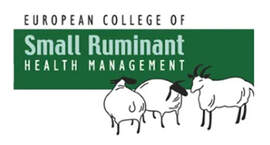 The organizing committee included Prof. Emilia Bagnicka from the Institute of Genetics and Animal Biotechnology Polish Academy of Sciences, Prof. Jarosław Kaba, Dr. Marcin Mickiewicz, and Ms. Zofia Nowek from the Division of Veterinary Epidemiology and Economics, Institute of Veterinary Medicine, Warsaw University of Life Sciences, and Dr. Adrian-Valentin Potârniche from the Faculty of Veterinary Medicine, University of Agricultural Sciences and Veterinary Medicine Cluj-Napoca Romania. On May 20, the ECSRHM General Meeting officially began with a visit to Mrs. Helena Wróblewska’s farm in Kierzliny. She described the history of her herd, which consisted of roughly 300 dairy goats. She also spoke about the farm’s daily schedule, manners, frequency of milking, and conditions for the welfare of the animals. Following the introduction, participants tasted products made by Mrs. Wróblewska, including milk, yogurt, various types of goat cheese, and some meat products. They also toured the facility to see the equipment used to make these products.
0 Comments
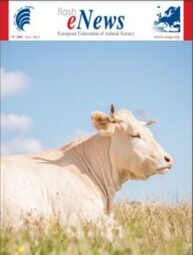 EAAP Newsletter n. 209 where the article appeared on 9th November 2021 EAAP Newsletter n. 209 where the article appeared on 9th November 2021 by R. Rupp SMARTER has held the third annual meeting from 11th to 22nd of October 2021, once again by video conference because of the COVID crisis. The agenda for the remote SMARTER included 3-hours meetings per WPs with 17 to 56 participants each. The meeting gave an overview of the great work achieved during the third year of the project. Despite the sanitary crisis, many new research results were delivered recently, with 7 papers submitted in 2021. New results were presented on proxies and genetic parameters for feed efficiency, feed intake and methane emission (WP1) and for resilience traits (health such as parasite resistance, immune response and mastitis, behavior, well-being, longevity and lethal mutations) (WP2) in sheep and goat. First results from trade-off experiments created in SMARTER (milk production dairy sheep line, goat longevity lines, residual feed efficiency sheep lines) were delivered (WP3). The experiments feed two allocation models in sheep and goat (WP3 and WP7). Additionally, a method for characterising resilience based on short time responses to infection was proposed (WP3). New methods for maintaining genetic diversity in genetic conservation programs were evaluated (WP5). Also, the general use of method LR (“Linear Regression”) for evaluating bias and accuracy in small ruminant genetics was endorsed (WP5). International Evaluation in sheep and goats (WP6) has progressed. Indeed, first analyses of across-country merged data were achieved in western Pyrenean Dairy Sheep (Spain and France) and in Saanen and Alpine goats (Canada, France, Italy, Switzerland). Moreover, harmonization and wider international cooperation is being promoted by multi-lingual questionnaire that were widely shared among partners. WP4 (genetic diversity) and WP7 (balancing breeding goal) consolidate their data collection and methods before analyses can progress. Several of the new results were presented during the EAAP meeting in Davos. Five theatre presentations and two posters were undertaken by four SMARTER partners (INRAE, INIA-UY, AUTH and FiBL/QUALITAS…) All the presentations will be available on SMARTER website. The majority of SMARTER Consortium agreed to ask for an 8-month extension (end June 2023) to allow partners to better consolidate and integrate results that were delayed because of the COVID-19 crisis. We hope that the roundtables with stakeholders (WP9) can take place in 2022 (within each country) as initially planned, as well as a face-to-face meeting in Leon before summer. 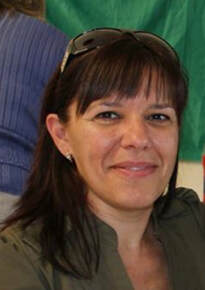 Dear IGA members, On November 16th, the IGA held a virtual conference, “Goats of the World and World of Goats,” where the newly elected IGA Board of Directors was presented, and a new term in our association began. The main goal of this new Board of Directors, similarly to the previous one, is to make IGA stronger, follow the IGA mission and vision, share knowledge, research, and experience, and promote prosperity around the world. The Regional Directors (RD), Country Representatives (CR), and all our members play a crucial role in accomplishing these objectives. During the last term (2016-2021), under the excellent leadership of Dr. Beth Miller, essential improvements were achieved, such as the increased international visibility of IGA and the website (https://www.iga-goatworld.com) being more dynamic and continuously updated. Additionally, the new strategic plan (2018-2030) and the guidelines to help when planning International or Regional Conferences (Conference planning information) were approved. I want to thank the committee members involved in those tasks, chaired by Dr. Davinia Sánchez and Dr. Lucia Sepe, who did excellent work. A report to the Small Ruminant Production Enhancement Project (SRPEP) by the International Livestock Research Institute in support of The Gambia’s livestock master plan
Karl M. Rich, Sirak Bahta, Abdrahmane Wane, Francis Wanyoike and Isabelle Baltenweck Study context The Gambia is the smallest country in West Africa, spanning just 11,300 square kilometres, with a high population density (176 people per square kilometre). It shares a single 749-kilometre overland border with Senegal. About 57% of its population is reported to live in urban areas. The total population in The Gambia is expected to gradually rise in the next three decades to approximately 4.3 million people, requiring anticipative policies concerning both infrastructure development and food supply improvement (Nyoni et al. 2019). The Gambia’s economy relies heavily on the tourism and agriculture sectors. The gross domestic product (GDP) grew by 6% in 2019 against a 6.5% growth in 2018, predominantly with an increase of 10% of services supported by wholesale and retail trade while the agriculture sector contracted by 10% (World Bank 2020). The agriculture sector remains too dependent on weather conditions, predominantly traditional and is characterized by low input extensive system of husbandry. Moreover, the Gambian agricultural sector struggles to overcome its key long-term development challenges related to the country’s undiversified economy, small internal market, limited access to resources, lack of skills necessary to build effective institutions, high population growth, lack of private-sector job creation and high rate of outmigration. More specifically, the agricultural sector suffers from a structural inability to produce more and better, respond to increasing demand for livestock products and sustain a better life from livestock. Agricultural productivity in The Gambia remains quite low and, in turn, has significant adverse implications for the economy. Report of the study conducted in Northern Karnataka Markets Dr. B. R. Athani Special thanks to Mamta Dhawan (IGA CR - India) 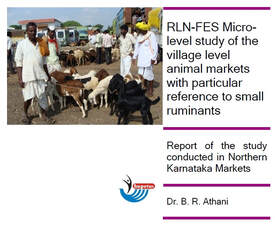 Abstract Increase in urbanization and per capita incomes have lead to shift in preferences of consumers towards protein rich foods, mainly the meat and dairy products. Within the meat subsector, the consumers in the terminal markets can be segmented based on their attitude towards the type of meat in terms of its quality, age, sex and species of origin. As a result, the traditional livestock markets are getting reorganized as monopolistic competitive with focus on the above parameters. On the other hand, the data suggests that shepherding is declining in irrigated areas for want of grazing land and several other factors. But in other areas, predominantly the uplands, the trends are encouraging. The vibrant live animal markets are subtly heralding new opportunities in the subsector. The study was intended to undertake subsector analysis for small ruminants with more focus on their markets and the supply channels operating in the vicinity of production areas. Subsector was mapped to analyze the dynamics including the gaps in order to identify and address the bottlenecks. The results points out that even though the markets appear monopolistic competitive, still, they are complex and lack considerable degree of transparency in pricing, grading the animals and flow of market information. Traders generally use “nigah” method of pricing that does not employ scientific measurements to determine price. The price spread appears relatively thin, depends again on size of markets and presence of participants from far off metro cities. The channel length is shorter in small satellite markets where shandy traders and butchers from nearby small towns dominate. The price of the meat in such small markets is also lower compared to the one at metro cities by 20%-30%. Ideally the price of live animals should have direct correlation with price of meat in terminal markets, but we observed that it is never a straight jacket transfer. Apart from trade controlled assessments, tendencies for opportunistic behavior by the buyers based on the local market conditions (in terms of inflow of animals, distresses on part of sellers, number of participants from metros, etc.) determine price trends. Rahman Rostamkhani (1), Seyyed Saeid Mousavi (2), Hossein Ghorbani (1), Seyyed Vahid Mortazavi (1), Mohammad Taghi Moslemioun (2), Mohammad Hossein Nemati (2), Hassan Mohammadi Nedjad (2), Nader Papi (3) and Farhad Mirzaei (3) (1) Animal Production Improvement Administration of Zanjan province. Agricultural Jihad Organization. Zanjan, Iran. (2) Animal Science Research Department. Zanjan Agricultural and Natural Recourses Research and Education Center. AREEO. Zanjan, Iran. (3) Agricultural Research Education and Extension Organization (AREEO), Animal Science Institute of Iran, Karaj. 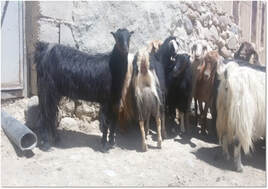 History of goat rearing in Zanjan province Archeological studies show the history of goat domestication dates to 7000 BC. Historical references also refer to Persia (Iran) as the land of origination of goat domestication. Since the earliest times, Iranians have reared goats for meat, milk, fiber, and skin supply. Currently, goat rearing has a notable role in Iranian nomadic and rural household’s life economy. The recent year’s goat keeping importance has been revealed much more because of climate changes, feed source limitation, and lack of relative advantage of pure breed farm animal production in Iran. Goat keeping has an essential role in meat and milk production in Zanjan province. Historically Name of Afshari goat is originated from the Afshar tribes who first reared this ecotype of goat in the region. Geographic distribution area Afshari goat population has been distributed in the different parts of the Zanjan province in about 20000 Km2.surface area, including highland altitudes and plains areas with other climatic conditions. Population Based on the current official data, the Afshari goat population is estimated at about 130,000 heads in the province. Rearing systems Goat keeping procedures are generally rural or semi-nomadic system. Goats are often reared together with sheep and in the grazing livestock act as a frontier animal or leadership of the flocks. Pure herds of goats are not usually seen among the local livestock. Job creation Among the farm animal rearing, goat keeping is a part of daily life of the rural and tribes because of their great interest in this occupation. They usually keep goats not only to improve their incomes but also for the natural compatibility and attractive appearance of their herds. The cultural, social, and economic relationship among nomadic and rural communities Afshari goats with 130,000 heads produce some 550 tons of meat and 2,000 tons of milk in the province annually. Milk, fiber, and meat of Afshari goat are used by the nomadic and rural, and also urban people. Goat keeping has an important role in rural and nomadic life economy because of the food source supply and earning incomes. Hence, Afshari goats have great economic importance for rural or nomadic households. Appearance features Few references indicate the phenotypic characteristics of Afshari goat among the goat sciences literature. In general, the dominant color of the coating fiber is pure black, but other colors are seen in the flocks. Both male and female goats are hornless. Bucks have a strong and muscular body, and because of the good capability of grazing in poor pastures or feeding low-quality forages and they can return good income for their owners. Does have good performance of milk production, daily milk yield ranges from 1.5-2.3 Kgs. Mature bucks weigh more than 60 kgs., which is a good potential for meat production. Export
Goat yields are generally consumed inside the province, and the exportation of the products is not performed. Items used for products Of the Afshari goat products, hair products can be mentioned. Hair fiber growth is about 25 cm/year, and each goat can produce some 400 grams of hair per year, which is used for preparing of handicrafts and traditional clothes in most villages. The skin is used in the leather industry. Milk is used for feeding kids, and the rest of it is used to prepare cheese, yogurt, whey, and some other local milk derivatives. Mature bucks weigh more than 60 kgs., which supply the local and urban residents’ meat needs. Measures for identifying and genetic improvement There is a decent rate of multiparity in Afshari goats, which can result in high performance and more economic animals, by performing of interbreeding selections or other livestock improvement programs. In 2007, an on-farm project plan entitled “An investigation on crossbreeding of the Sannen bucks with native black goat (Afshari does)” was carried by the Research Center for Agriculture and Natural Resources of Zanjan province. In these projects, the performance of first and second generation of crossbreds (F1 and F2) had a relatively good result, but in most cases, their adaptability was weak in the rural rearing condition. Suggestions for performance improvement As a national genetic resource, Afshari goats have valuable production performance and traits which has not been studied scientifically. For identification of the production performance of this ecotype, it is necessary to do comprehensive researches and studies. Recruitment, development of research and extension capabilities, and study abroad experiences for animal science and pre-vet students using small ruminants as models Research Report 2019-2020 Resident Instruction Grants Program for Institutions of Higher Education in Insular Areas (RIIA) Special thanks to Prof. Abner Rodriguez, IGA Country Representative for Puerto Rico, for sharing this information with us. 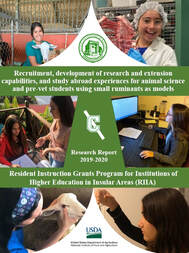 Contenido – Content Lauren Veloudis-Padilla, Tiara Medina, Luis C. Solórzano y Abner A. Rodríguez
Tiara Medina-González, Lauren Veloudis, Luis C. Solórzano y Abner A. Rodríguez
Patricia Bello Quiñones, Luis C. Solórzano y Abner A. Rodríguez
Patricia Leal García, Luis C. Solórzano y Abner A. Rodríguez
Adriana Rivera Gracia, Aixa Rivera, Elvin Ronda, Luis C. Solórzano y Abner A. Rodríguez
Diana Nevárez Rolón, Aixa Rivera, Elvin Ronda, Luis C. Solórzano y Abner A. Rodríguez
Presenta: MVZ.MC.Dr. Héctor Mario Andrade Montemayor Presidente de ALEPRyCS y Director Para México, Centro América y el Caribe de la IGA 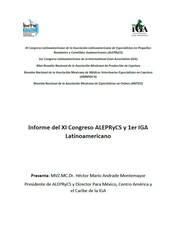 descargar el informe descargar el informe El presente informe técnico del XI Congreso de la ALEPRyCS y 1er IGA Latinoamérica, con la finalidad de apoyar en el desarrollo de capacidades técnicas en el área de pequeños rumiantes, tanto al personal técnico, estudiantes, profesionistas y académicos. Este congreso se conformó de 4 partes: (31 de Mayo al 3 de Junio)
Descargue el informe completo, haga clic aquí. 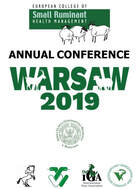 Conference Abstracts Conference Abstracts Written by Emilia Bagnicka, IGA Regional Director for Eastern Europe The Annual European College of Small Ruminant Health Management (ECSRHM) conference took place in Warsaw (Poland) on May 11th 2019 at Warsaw University of Life Science – SGGW, Faculty of Veterinary Medicine. The conference was organized by ECSRHM, Faculty of Veterinary Medicine of WULS-SGGW, Polish Society of Veterinary Sciences – PTNW, International Goat Association – IGA, and Warsaw Chamber of Veterinary Surgeons. The international goat conference that took place in Kouty from November 9th to 10th, 2018, included visitors from Poland and the Slovak Republic.
|
IGA Blog
The International Goat Association promotes goat research and development for the benefit of humankind, to alleviate poverty, to promote prosperity and to improve the quality of life. Archives
May 2024
Categories
All
|
|
International Goat Association
2516 Millbrook Rd., Little Rock, AR72227 USA email: [email protected] -454-1641 |
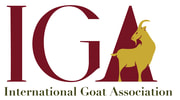
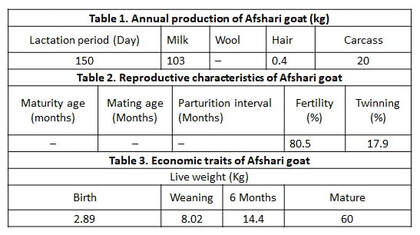

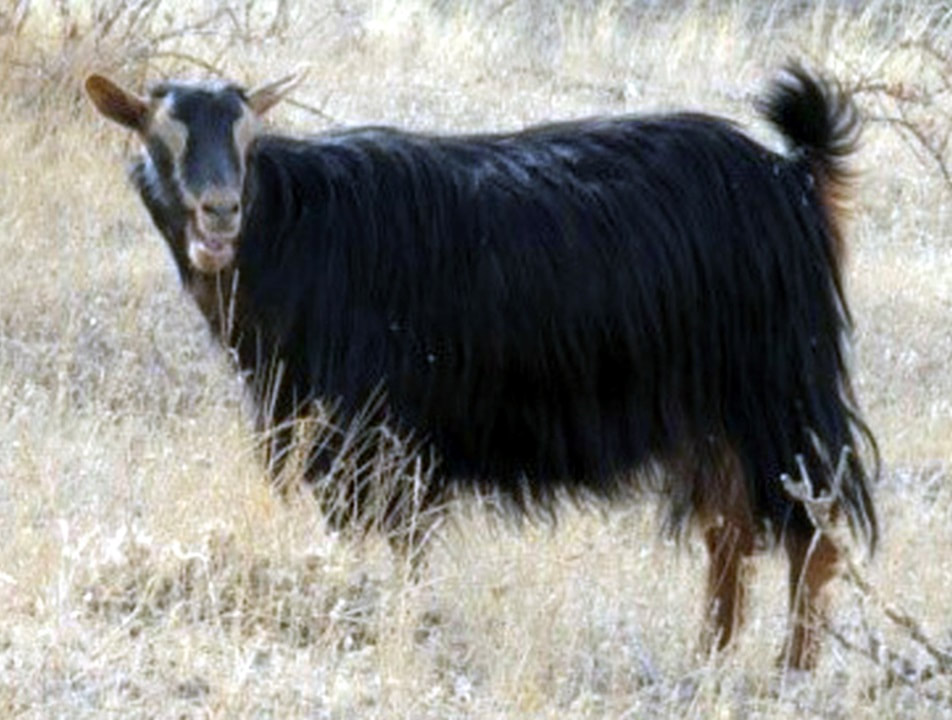

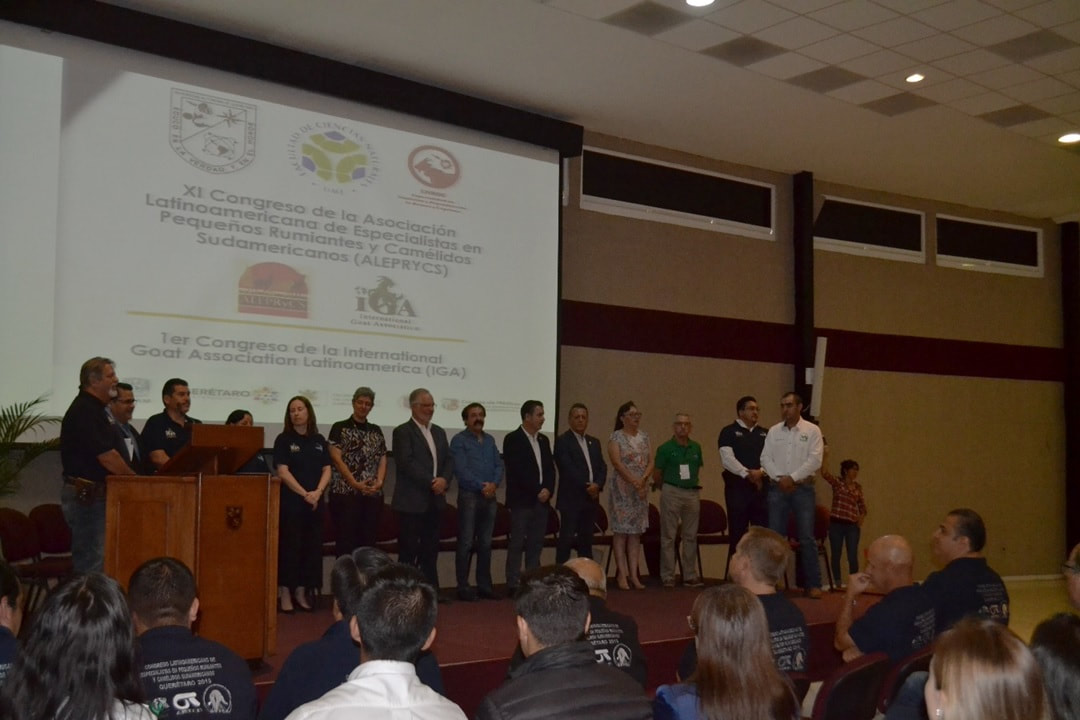
 RSS Feed
RSS Feed